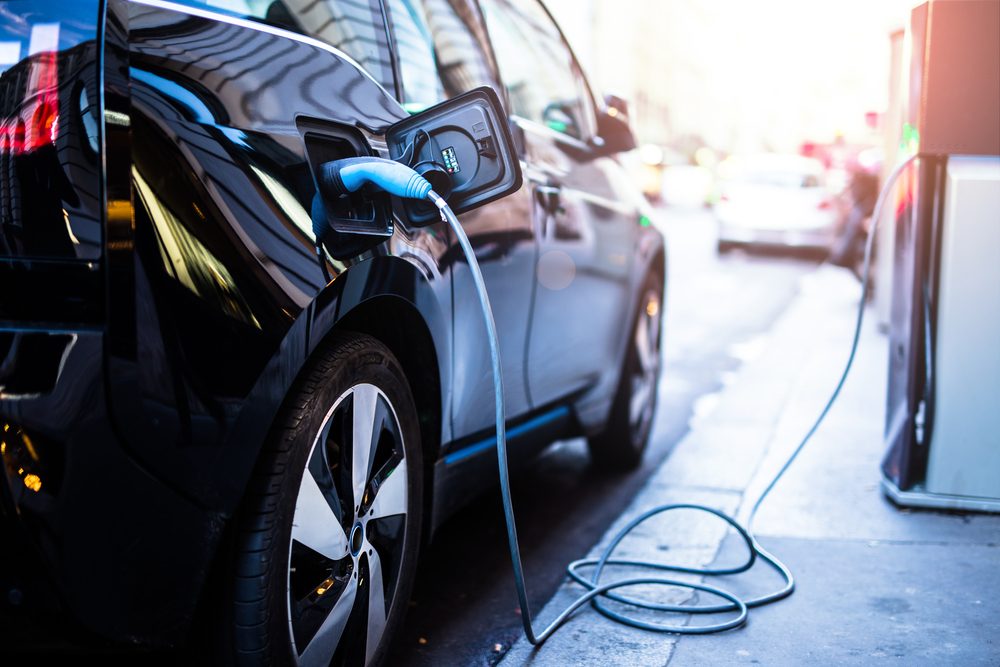We are currently in a global automobile revolution, driven by air pollution, fuel efficiency, and climate change. This shift has been facilitated by some key factors. First, there have been significant technological advancements, allowing the development of more advanced, eco-friendly vehicles. Secondly, there has been exceptional strength in the support from international public policy – there’s a carrot for the consumers and a stick for the original equipment manufacturers (OEMs).
The carrot comes in the form of subsidies, which some countries are embracing more fully than others, and the stick takes the form of fines for lack of compliance with carbon-emissions targets. By 2025, the Netherlands and Norway are planning to ban diesel and gasoline engines. India and Germany are set to follow in 2030, while the UK aims to no longer sell diesel and gasoline cars by 2040.[1]
However, OEMs are also fearful of the stick being threatened by regulators. The European Union target is to limit vehicles’ emissions to 95 grams of CO2 per kilometer by 2021. The average emissions level of a new car sold in 2017 was 118.5 grams of CO2 per kilometer,[2] so, as it stands, some manufacturers look likely to receive fines running into the billions.
Major manufacturers estimate that 15-25% of their group sales will come from electric vehicles (EVs) by 2025, increasing to two thirds of sales by 2030. This is a huge vote of confidence from significant players in the market. In raw numbers, manufacturers are suggesting that they will be selling two to three million EVs per year. This demonstrates the extent of the revolution, considering that there are only just over one million EVs in the current global market.
What Does This Mean for the Myths that Exist Surrounding the Future of EVs?
- There’s no demand
As with many things sustainable, EVs are perceived to be niche and likely to remain so. In actual fact, EVs are becoming increasingly mainstream. In 2017, the pure EV growth rate was 61%, while the hybrid growth rate was 36%. This meant that the combined number of EVs on the roads went up from 740,000 to 1.1 million.[3]
- Incumbents’ resistance
Initially, many OEMs resisted and competed with EVs. However, with recent policy developments, the mood seems to have changed to ‘if you can’t beat them, join them’, suggesting that resistance may be decreasing.
- EVs are not practical enough for consumers
The main barrier to EVs taking off has been insufficient technology. In fact, when the internal combustion engine was introduced at the turn of the 20th century, EV technology already existed. However, early EVs could only travel around 20 miles before needing recharging, and were not renowned for their speed. However, most mass-market electric vehicles can now travel around 125 miles on a full charge, with some travelling as far as 300 miles. They also have a higher instant torque, meaning that they have now broken the record for the time needed to accelerate from 0 to 60 miles per hour.
- EVs cannot compete on price
The cost is one of the most significant barriers preventing consumers from buying EVs. While EVs remain more expensive than the average car, the cost has dropped rapidly and will continue to do so. In 2010, the cost of a battery cell was $1,000. This is expected to fall to $100 by 2021, at which point EVs should achieve cost parity with gasoline/diesel cars. This coincides with the planned launch date of many EVs, and so 2021 could be the year to watch.
The key question has shifted from ‘Will EVs be the cars of the future?’ to ‘When will the EV transition occur?’ 2021 will be the first key date to watch, with many new EV launches coinciding with the cost-parity projection. Beyond this, the industry should continue to evolve and be an area of interest for investors.
This is a short extract from a BNY Mellon ‘Agents of Change’ podcast series. To hear more about electric vehicles, you can listen to the full podcast here.
[1] https://www.bbc.co.uk/news/uk-40723581
[2] https://ec.europa.eu/clima/policies/transport/vehicles/cars_en
[3] https://www.businessinsider.com.au/the-rapid-growth-in-global-electric-vehicle-sales-in-4-charts-2018-1
This is a financial promotion. Material in this publication is for general information only. The opinions expressed in this document are those of Newton and should not be construed as investment advice or recommendations for any purchase or sale of any specific security or commodity. Certain information contained herein is based on outside sources believed to be reliable, but its accuracy is not guaranteed. You should consult your advisor to determine whether any particular investment strategy is appropriate. This material is for institutional investors only. Any reference to a specific security, country or sector should not be construed as a recommendation to buy or sell this security, country or sector. Please note that strategy holdings and positioning are subject to change without notice.
Important information
This is a financial promotion. Issued by Newton Investment Management Limited, The Bank of New York Mellon Centre, 160 Queen Victoria Street, London, EC4V 4LA. Newton Investment Management Limited is authorized and regulated by the Financial Conduct Authority, 12 Endeavour Square, London, E20 1JN and is a subsidiary of The Bank of New York Mellon Corporation. 'Newton' and/or 'Newton Investment Management' brand refers to Newton Investment Management Limited. Newton is registered in England No. 01371973. VAT registration number GB: 577 7181 95. Newton is registered with the SEC as an investment adviser under the Investment Advisers Act of 1940. Newton's investment business is described in Form ADV, Part 1 and 2, which can be obtained from the SEC.gov website or obtained upon request. Material in this publication is for general information only. The opinions expressed in this document are those of Newton and should not be construed as investment advice or recommendations for any purchase or sale of any specific security or commodity. Certain information contained herein is based on outside sources believed to be reliable, but its accuracy is not guaranteed. You should consult your advisor to determine whether any particular investment strategy is appropriate. This material is for institutional investors only.
Personnel of certain of our BNY Mellon affiliates may act as: (i) registered representatives of BNY Mellon Securities Corporation (in its capacity as a registered broker-dealer) to offer securities, (ii) officers of the Bank of New York Mellon (a New York chartered bank) to offer bank-maintained collective investment funds, and (iii) Associated Persons of BNY Mellon Securities Corporation (in its capacity as a registered investment adviser) to offer separately managed accounts managed by BNY Mellon Investment Management firms, including Newton and (iv) representatives of Newton Americas, a Division of BNY Mellon Securities Corporation, U.S. Distributor of Newton Investment Management Limited.
Unless you are notified to the contrary, the products and services mentioned are not insured by the FDIC (or by any governmental entity) and are not guaranteed by or obligations of The Bank of New York or any of its affiliates. The Bank of New York assumes no responsibility for the accuracy or completeness of the above data and disclaims all expressed or implied warranties in connection therewith. © 2020 The Bank of New York Company, Inc. All rights reserved.





